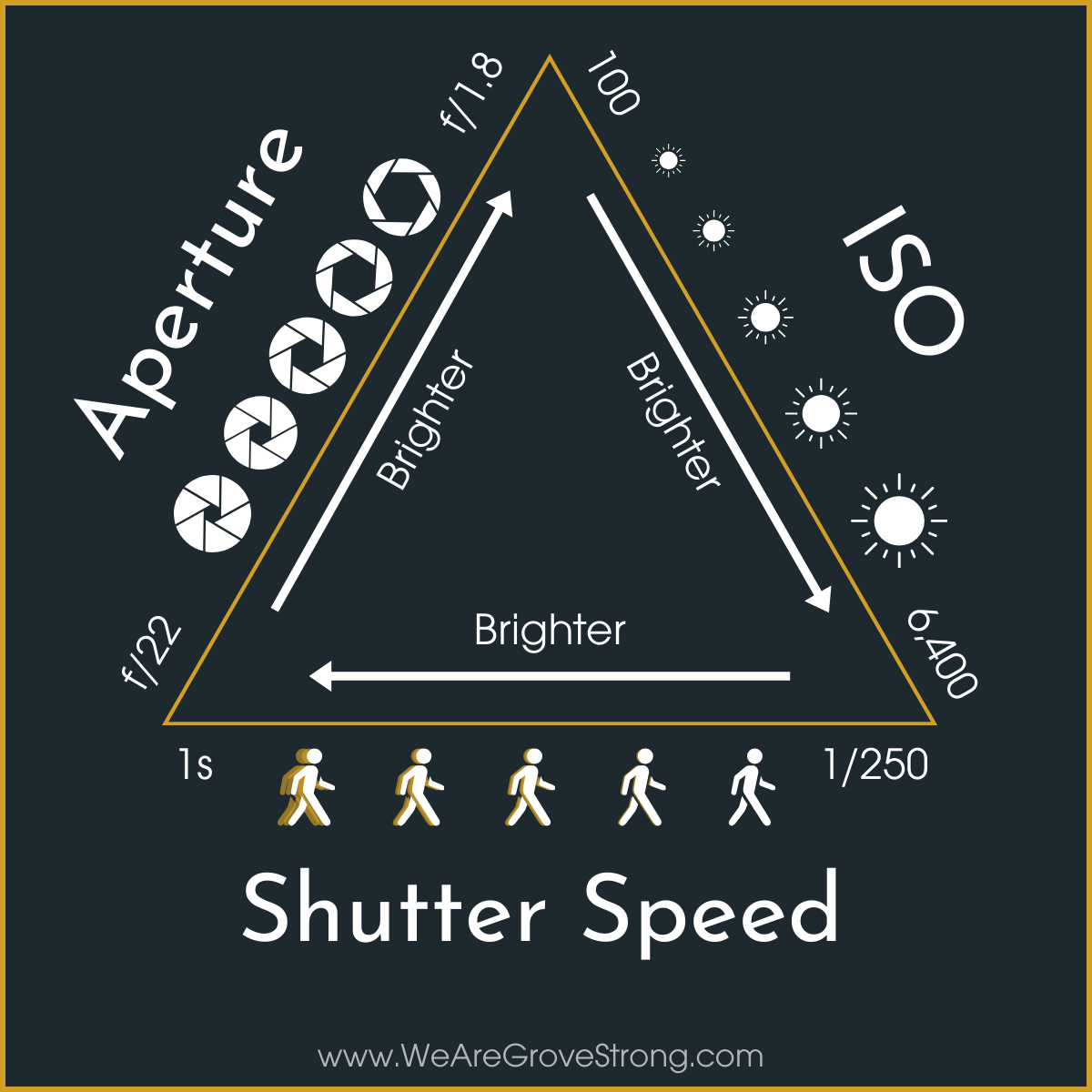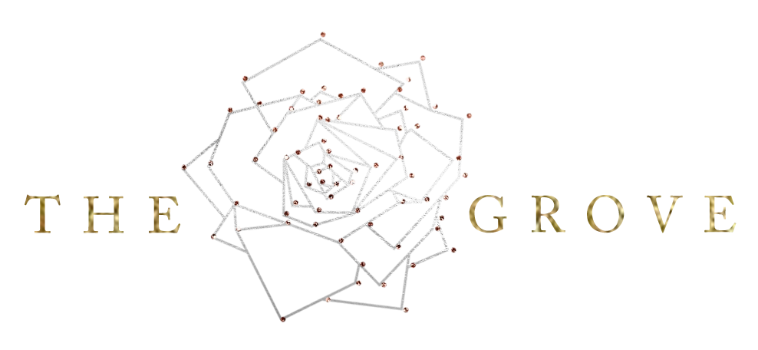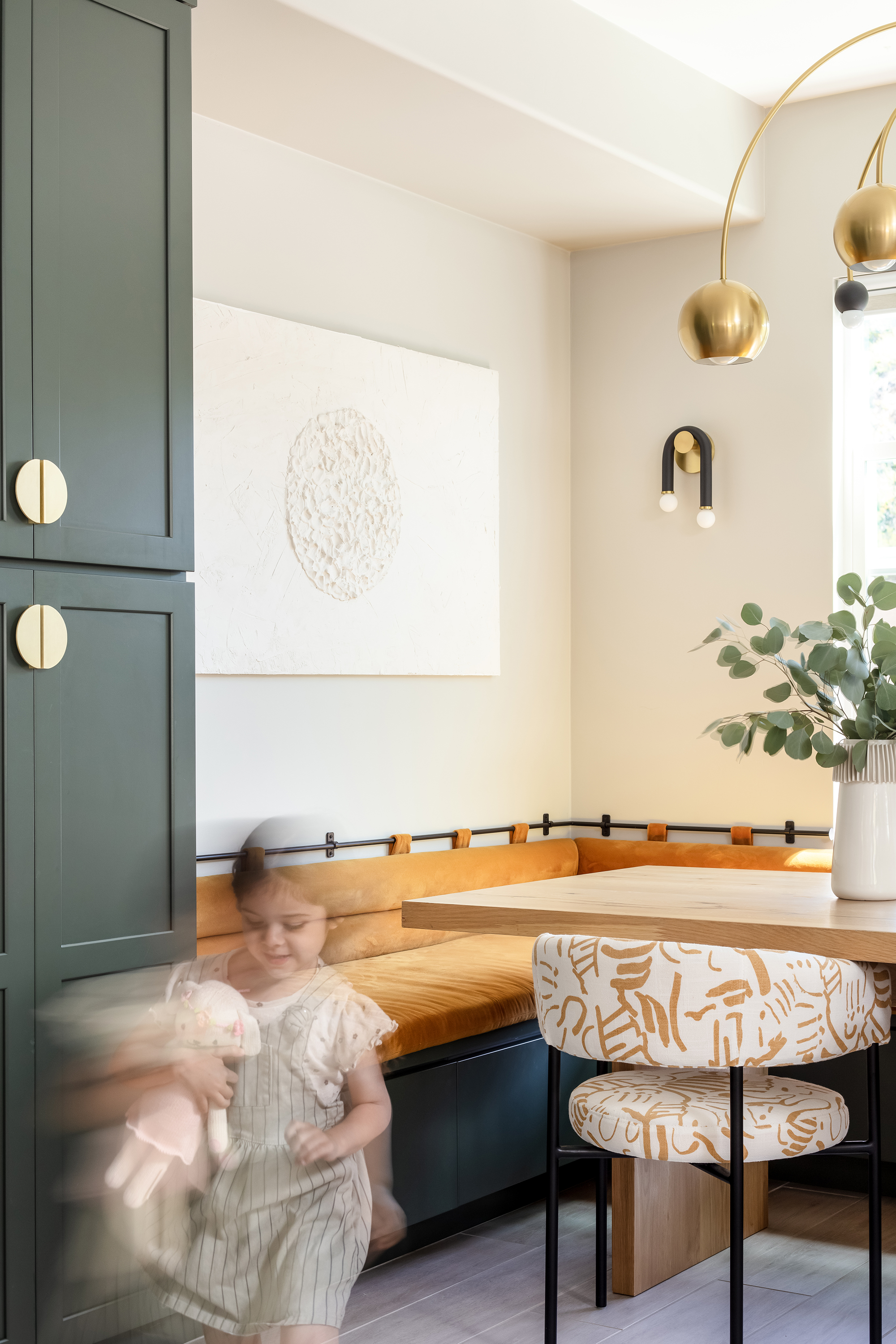Photo Basics: Understanding the Exposure Triangle
Friday, February 02, 2024 | By: Natalia Robert
Photography is about light and composition. You need both to create a beautiful image, whether it's of an architectural photo, and interior photo, or a real estate photo. If you're a beginner to photography or to interior photography, you'll want to get familiar with the elements of the exposure triangle and how it will impact your photos!
To master light in photography, you need to master the exposure triangle. That's because understanding this balance of how light enters the camera and hits the sensor will allow you to control light, as well as movement and depth of field. The more control you have, the better able you are to create photos that fit your clients' needs.
The exposure triangle is a fundamental concept in photography that involves three critical components: aperture, shutter speed, and ISO. Understanding how these elements interact with one another is key to achieving the perfect exposure for your interior photography.
Let's break down the triangle, one point at a time.
What is the Exposure Triangle?
The exposure triangle in photography is a graphic that shows the balance and relationship between ISO, Aperture, and Shutter Speed. These are the three elements in our camera that we use to create an exposure and control the light.
The three elements are placed in a triangle shape to help better understand this relationship between ISO, aperture, and shutter speed. You can see what changes as you adjust each one. Using this graphic, you can tell that as you adjust one to get brighter, you'll need to adjust another to get darker. What you adjust is up to you, and depends on the look you want to achieve, as well as the photo shoot conditions that you're in.
To the right we have the exposure triangle graphic. You can see that each side is dedicated to one of the three elements, and what impact adjusting each element will have. Right click on it to download!

Aperture - Controlling the Depth of Field
Aperture refers to the size of the opening in the lens through which light enters the camera. It is measured in f-stops, with smaller f-stop values like f/1.4 or f/2.8 indicating larger openings and larger f-stop values like f/16 or f/22 indicating smaller openings. The primary function of aperture is to control the depth of field (DOF) in your photographs, but the bigger the opening, the more light that is received. This means that as you go to lower f-stops, you'll also see the exposure brighten.
A wide aperture (small f-stop value) results in a shallow DOF, where the subject is sharply focused, while the background blurs pleasantly. This is ideal for portrait photography or when you want to isolate a specific element in the frame.
On the other hand, a narrow aperture (large f-stop value) increases the DOF, ensuring that both the foreground and background remain in focus. This is often use by landscape photographers to help make sure the entire scene is in focus. Likewise, for architectural and interior photography, you'll also want the f-stop to be a higher number. Typically, at least an f-stop of 8 is recommended to help make sure that the entire space is in focus.
For interior and architectural photography, you typically do not adjust the f-stop while shooting unless you are shifting to detail shots. For details, it's common to open up the aperture and drop the f-stop to somewhere in the range of 2.8-4.0. However, for all other shots, it's recommended that you keep the entire image in focus.
Shutter Speed - Capturing Motion
Shutter speed refers to the amount of time the camera's sensor is exposed to light. It is measured in seconds or fractions of a second. Faster shutter speeds like 1/1000s freeze motion, making it perfect for capturing fast-moving subjects or eliminating camera shake.
Conversely, slower shutter speeds like 1/30s or slower create a sense of motion in the image, which is useful for photographing flowing water or capturing light trails at night. However, slower shutter speeds require a steady hand or the use of a tripod to prevent blurriness caused by camera shake.
For interior and architectural photography, a tripod is essential. Most of your images will be captured on a tripod, so the shutter speed can fluctuate as needed. But while this setting may have more freedom to change than the others, there are two situations where you need to be very mindful of the shutter speed.
When you shoot any handheld images, be sure to stay at a fast enough shutter speed to avoid blur from hand-shake. A general rule of thumb is that the minimum speed needed is 1/(twice the focal length). For example, if you're shooting with a 50mm, you'll want the shutter speed to be at least 1/100 of a second to avoid handshake blur.
On the other hand, there are times when you may want to see some blur. This is often the case when people are inserted into interiors, and you want to see a blurred person moving through the space. For this, we recommend a speed of no more than 1/10 of a second. Keep in mind, though, that you'll most likely need to do some practice rounds with your model to find just the right shutter speed for them! You can learn more about working with people in interior photos in our Field Note all about Posing People in Interior Photos!
When adjusting for various exposures of the same composition in interior photography, the shutter speed is typically the setting that is adjusted. This is because you are shooting on a tripod, so changing it does not affect the appearance of the elements in the photo - it simply brings in more or less light.
ISO - Sensitivity to Light
ISO represents the sensitivity of your camera's sensor to light. It is measured in numerical values such as 100, 200, 400, etc. Although this is carried over from the days of film photography, our digital cameras mimic the different levels of sensitivity in the same way.
Low ISO values (e.g., ISO 100) are less sensitive to light and are typically used in bright conditions or when you want to maintain the highest image quality with minimal digital noise.
Conversely, high ISO values (e.g., ISO 1600 or above) increase the sensor's sensitivity, allowing you to shoot in low-light situations. However, using high ISO settings may introduce digital noise, reducing image quality.
For interior or architectural photography, you'll want to keep the ISO as low as you can while allowing the aperture and shutter speed to be where they need to be. As you'll learn with the exposure triangle, it's all about finding that balance between the three elements. We recommend an ISO of 200 for most conditions, with and ISO of 100 being used for exterior photos in sunny conditions.
While digital cameras are constantly improving their ability to shoot in low light with less digital noise, it's wise to keep your ISO below 800 to avoid any possible noise during your editing process.
Balancing the Triangle - Achieving the Perfect Exposure
The key to achieving the perfect exposure lies in finding the right balance between aperture, shutter speed, and ISO. When adjusting one element of the exposure triangle, you often need to compensate by adjusting one or both of the other elements.
For example, if you increase the aperture size to achieve a shallower DOF on a detail interior photo, you might need to increase the shutter speed or lower the ISO to prevent overexposure. (Chances are you'll want to increase the shutter speed in this instance anyway since many detail shots are taken without the use of a tripod).
Similarly, if you increase the shutter speed to make avoid blur due to movement from a curtain, a plant, or a person, then you'll want to compensate by lowering your aperture or increasing your ISO. If this is for an interior photo, we recommend first increasing the ISO because if you alter the aperture then your depth of field will be inconsistent.
It can take some time to get used to the cause-and-effect of the exposure triangle, but the best way to get a clear understanding of it is to start taking photos at different settings!
EXERCISE:
Try taking the same photo, but adjust different settings in each one. See how the look and exposure changes from one to another.
Conclusion
Mastering the exposure triangle is a crucial part of elevating your photography skills. Understanding the interplay between aperture, shutter speed, and ISO empowers you to have creative control over your photographs and adapt to different lighting conditions and subjects.
As with anything, though, it's all about practice! Don't be afraid to jump in and change settings just for the sake of seeing what it does. This is often the best way to learn.
Once you have a clear understanding of the exposure triangle, you'll be better equipped to handle changing conditions and client requests that come your way.
Happy shooting!






